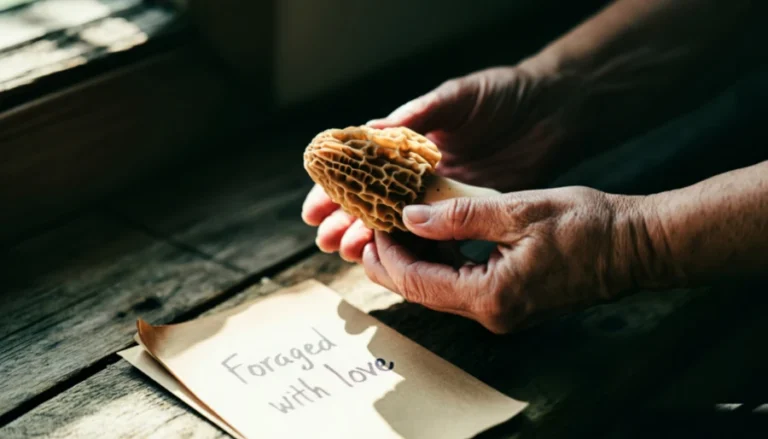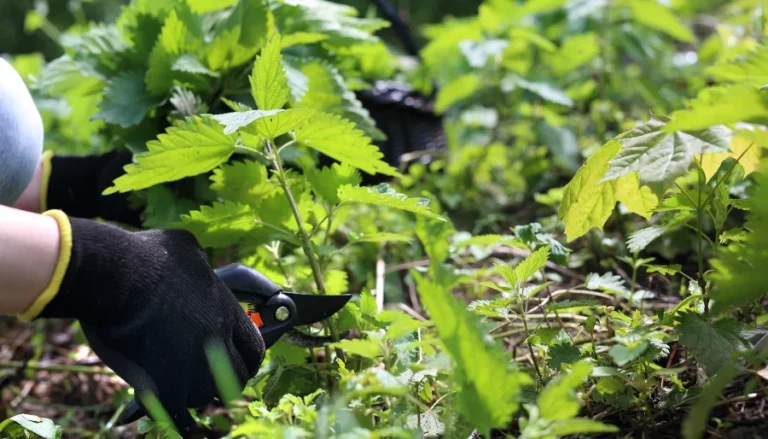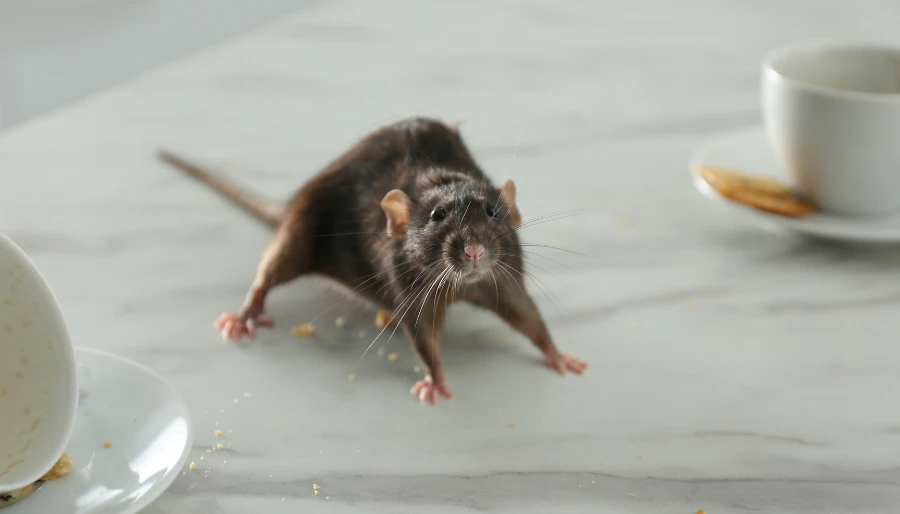Welcome to a journey through the unheralded yet indispensable world of genetically modified (GM) crops, the silent champions on our plates, in our fields, and in our daily lives. In this exploration, we’ll dive into the remarkable story of the five most consumed GM crops in the United States – corn, soybeans, cotton, alfalfa, and canola – unveiling how these extraordinary plants shape our everyday existence in ways we often overlook.
Imagine a day without your favorite snack, the clothes on your back, or even the fuel that powers your car. It may seem far-fetched, but these scenarios are closer to reality than we think, were it not for the innovative advancements in agricultural biotechnology. As we embark on this enlightening voyage, we’ll not only unravel the extensive uses and benefits of these crops but also demystify common misconceptions, particularly around their safety and impact on our health.
In a world where opinions on GM crops are as varied as the crops themselves, we aim to shed light on the tangible, often unnoticed ways these crops enhance our lives. From the canola in your margarine to the cotton in your jeans, the story of GM crops is interwoven into the fabric of our daily lives. So, let’s turn the page and discover the extraordinary narrative of these ordinary crops, understanding their pivotal role in not just sustaining but enriching our modern lifestyle.
Join us as we reveal how these five genetically modified crops, often subjects of debate, are unsung heroes, making our lives easier, cheaper, and more sustainable (higher crop yield per acre). Prepare to be surprised, informed, and, above all, to gain a new appreciation for the ingenuity and impact of these omnipresent yet often invisible pillars of our daily existence.
5. Canola
Canola, occupying the fifth position in the list of the most consumed genetically modified crops in the United States, holds a significant place in the American agricultural landscape. This versatile crop, primarily cultivated for its oil, covers an impressive 2.4 million acres of farmland.
The Rise of Genetically Modified Canola
A staggering 90% of canola in the U.S. is genetically modified (GM), a testament to the profound impact of biotechnological advances in agriculture. The modification of canola’s genetic makeup primarily aims to enhance its resistance to herbicides, making it a more viable and sustainable option for farmers.
Canola oil, derived from the seeds of GM canola plants, is a staple in American kitchens, used extensively for cooking due to its light flavor and high smoke point. And, let’s be honest, it’s inexpensive in comparison to most other oils.
Beyond the kitchen, it finds its place in the production of margarine and as an emulsifier in various food products. Surprisingly, canola has one of the lowest amounts of saturated fat (7%) in comparison to other cooking oils. While there are other healthier options, canola is inexpensive, thanks to the genetic modifications.

Before you run out to buy a barrel of canola oil and replace your far more expensive EVOO, keep in mind that while canola does have less saturated fats than any other oil, it’s also highly refined. This heat and chemical process to extract the oil greatly reduced (destroys) the nutrients and health benefits it has to offer.
Biotechnological Innovation
The transformation of canola into a genetically modified crop was pioneered by leading agricultural biotech companies such as Monsanto and Pioneer. These companies have played a pivotal role in developing canola varieties that can tolerate specific herbicides, notably Monsanto’s introduction of glyphosate-resistant canola. This innovation allows farmers to control weeds more effectively without damaging the crops, leading to higher yields and more efficient farming practices.

The journey of canola as a genetically modified crop began in the late 20th century, marking a significant milestone in agricultural biotechnology. The introduction of GM canola revolutionized crop management and farming efficiency, allowing farmers to grow considerably more on less land, which made it more affordable for everyone. The impact of this technological advancement isn’t just limited to agriculture but also extends to the realms of environmental sustainability and food security.
Simply put, genetically modified canola stands as a key example of how biotechnology can reshape agriculture.
4. Alfalfa
Alfalfa, ranking fourth among the most consumed genetically modified crops in the United States, is a cornerstone in the field of livestock agriculture. Covering an expansive 14.9 million acres, alfalfa isn’t just a crop but a vital component of the agricultural ecosystem.
The Advent of Genetically Modified Alfalfa
The year 2011 marked a significant milestone in the journey of alfalfa with the FDA’s approval of its genetically modified (GM) variant. This variant of alfalfa is engineered to be resistant to certain herbicides, primarily to simplify weed control and enhance yield. The approval underscored the safety of GM alfalfa for both livestock consumption and environmental impact.

The Role of Alfalfa in Livestock Nutrition
Primarily cultivated as fodder for livestock, alfalfa is renowned for its nutritional richness. It’s a key source of essential nutrients such as calcium, phosphorus, potassium, and iron, making it an indispensable part of the diet for livestock animals, especially cattle.
Impact on Livestock Farming
The introduction of herbicide-resistant alfalfa has brought about a paradigm shift in livestock farming. It has enabled farmers to manage weeds more effectively, leading to healthier and more abundant alfalfa crops. While it didn’t eliminate the use of all pesticides and insecticides, it did trim down their use significantly. This, in turn, translates to more nutritious feed for livestock, thereby improving the overall efficiency and productivity of livestock farming.
The development and approval of GM alfalfa are relatively recent compared to other genetically modified crops. However, its impact has been profound. The decision to introduce GM alfalfa into agriculture was met with both enthusiasm and scrutiny, reflecting the evolving nature of agricultural biotechnology and its role in modern farming practices.
3. Cotton
Cotton, the third most consumed genetically modified crop in the United States, isn’t just a textile raw material but a multifaceted agricultural product. Spanning over 15.1 million acres, GM cotton varieties have transformed the landscape of American agriculture.
The United States boasts approximately 16 genetically modified varieties of cotton, each engineered for specific traits and benefits. This diversity reflects the intricate balance between agricultural needs and technological advancements, showcasing the adaptability and resilience of cotton as a crop.
Beyond Textiles: The Versatility of Cotton
While usually associated with clothing and textiles, genetically modified cotton serves a broader spectrum of uses. Cottonseed oil, extracted from the seeds of GM cotton plants, is a popular choice for frying and is also used in products like margarine. Additionally, the byproducts of cotton processing are repurposed as animal feed, illustrating the crop’s comprehensive utilization.

Biotechnological Innovation in Pest Management
One of the most notable achievements in genetically modifying cotton has been the development of varieties that produce a toxin lethal to the bollworm, a major pest. This innovation represents a significant stride in integrated pest management, reducing the reliance on chemical pesticides and promoting more sustainable farming practices.
Historical Context and Global Impact
The journey of GM cotton began in the late 20th century, with the first commercialization of transgenic cotton in the 1990s. This development marked a turning point in agricultural biotechnology, fundamentally altering cotton cultivation. The ability to resist pests like the bollworm not only increased yields but also had a ripple effect on the global cotton industry, affecting everything from farming practices to international trade.
Genetically modified cotton in the United States is a prime example of how biotechnology can revolutionize a traditional industry. The multipurpose nature of cotton, coupled with the advances in genetic modification, underscores the crop’s vital role in both agricultural and economic sectors. As we continue to explore sustainable and efficient agricultural practices, GM cotton’s story of innovation and adaptation remains a beacon of progress in the realm of agro-biotechnology.
2. Soybeans
Soybeans, standing as the second largest genetically modified crop in the United States, occupy a central place in both agriculture and the American diet. With a staggering 87.5 million acres dedicated to their cultivation; soybeans are a cornerstone of U.S. agricultural production.
The U.S. is home to around 20 genetically modified varieties of soybeans, each tailored to meet specific agricultural or nutritional needs. This diversity is a testament to the significant research and development efforts in agricultural biotechnology, aiming to optimize crop resilience, yield, and quality.

Dual Role in Nutrition and Agriculture
Soybeans play a dual role in the American food chain: they’re a major component of animal feed and a primary source of vegetable oil. Soybean oil, in particular, holds a dominant position in the U.S. diet, accounting for about 61% of vegetable oil consumption. Its widespread use in cooking and in processed foods is attributed to its affordability and versatility due to its lack of flavor. While not particularly nutritious, genetically modified soybeans has allowed both large and small scale producers including restaurants to compete more efficiently.
Impact on Food Industry and Agriculture
GM soybeans are designed to be more resistant to pests, diseases, and environmental stresses, contributing to more stable and increased yields. Moreover, their role in producing soybean oil and animal feed underlines the crop’s multifaceted importance in the food production chain.
The introduction and adoption of GM soybeans in the late 20th century marked a significant shift in agricultural practices, not only in the U.S. but also worldwide. This shift has been pivotal in addressing challenges of food security, sustainability, and agricultural efficiency.
1. Corn
Corn, the most prevalent genetically modified crop in the United States, is a staple of American agriculture. With an impressive 94.9 million acres under cultivation, it leads the pack in terms of acreage and versatility. The existence of 33 genetically modified varieties of corn in the U.S. reflects its significance and adaptability to diverse agricultural needs.
GM corn isn’t just a crop; it’s a powerhouse of utility. It serves multiple purposes, ranging from being a primary ingredient in processed foods to a key component in animal feed. High-fructose corn syrup and cornstarch, derived from GM corn, are ubiquitous in the processed food industry due to their versatility and cost-effectiveness. And while we’re all aware of the health concerns around corn syrup and ultra-processed foods, the advent of GM corn has helped feed more people than ever before on less land.

Corn in the Food and Energy Sector
Apart from its use in food products, genetically modified corn plays a vital role in the livestock industry. It forms a significant part of the diet for various livestock, contributing to the efficiency and productivity of animal farming. Beyond its nutritional applications, GM corn has also carved out a niche in the biofuel industry, being a primary source for ethanol production, which is instrumental in reducing carbon footprints.
The development of genetically modified corn varieties has been driven by the need to increase yield, improve resistance to pests and diseases, and enhance tolerance to environmental stresses. These modifications haven’t only bolstered crop resilience but also have led to more sustainable farming practices by reducing the need for chemical pesticides and fertilizers.
Historical Significance and Global Impact
The evolution of corn into a genetically modified crop dates to the latter part of the 20th century, marking a revolutionary chapter in the annals of agricultural science. The widespread adoption of GM corn varieties has had far-reaching implications, not just in the U.S. but globally, influencing mass food production, agricultural economies, and environmental policies.
GMO, Cross Pollination and Cross Breeding Explained in 4 Minutes
Science Has Spoken: What Is the Real Impact of GM Crops on Our Health?
Genetically modified (GM) crops, often a topic of debate, are in fact deeply ingrained in the daily lives of Americans. From the food on our tables to the fuel in our cars, the influence of these five key GM crops – corn, soybeans, cotton, alfalfa, and canola – is pervasive and largely beneficial.
Debunking Health Concern Myths
First and foremost, it’s crucial to address a common misconception: the safety of GM crops. Despite various opinions and skepticism, there’s a consensus in the scientific community, supported by decades of extensive research, that genetically modified crops are safe for human consumption. Major scientific bodies, including the American Medical Association and the National Academy of Sciences, affirm that GM foods don’t pose health risks different from their non-GM counterparts.
While this reality is often contrary to what many health ‘gurus’ and nutritional supplement peddlers and green juice influencers preach, science is paramount and doesn’t lie. GM crops are safe.
Everyday Use and Benefits Of Our Listed Crops
More To Discover
- Concerns Rise Over Possible Link Between Whale Deaths and Offshore Wind Farms; Facebook Faces Backlash Over Censorship
- Scientists Uncover Plant Hormone that Boosts Crop Growth by 30%, Paving the Way for Enhanced Sustainable Agriculture
- Solved: Mysterious Mass Deaths of Hundreds of Gray Whales Is Finally Explained
- Stanford Engineers Slash Energy Use by 97% with Ingenious Actuator
- Corn: A key ingredient in a vast array of products, from high-fructose corn syrup in soft drinks and snacks to cornstarch in sauces and gravies, GM corn is a staple in the American diet. And while this staple is partially to blame for the growing obesity epidemic throughout the nation, the genetically-modified components of the crop, are not. Additionally, its role in ethanol production for biofuel has environmental benefits, offering a renewable energy source.
- Soybeans: GM soybeans contribute significantly to our food supply, not just as soybean oil in cooking but also in processed foods. The soy lecithin in chocolates and the soy protein in meat substitutes are just a few examples of its daily use. Soybeans also form a critical component of animal feed, indirectly influencing the meat and dairy products we consume.
- Cotton: Beyond clothing, cottonseed oil from GM cotton finds its way into many kitchens and is a common ingredient in potato chips and salad dressings. The cotton plant’s byproducts also contribute to livestock feed.
- Alfalfa: Primarily used in animal feed, GM alfalfa supports the dairy and meat industries by providing a nutritious feed source, leading to healthier livestock and, consequently, better dairy and meat products.
- Canola: GM canola oil is a popular choice for cooking because it’s cheaper than other options, which also makes the end products less expensive for the consumer. Its presence in various food products enhances their taste and lowers the saturated fat in comparison to other oils. Of course, the ultra-processed nature of canola oil kills off any real health attributes, but it’s still lower in saturated fat.
The genetic modification of these crops hasn’t only made various products more accessible and affordable but also contributed to environmental sustainability. By developing pest-resistant and herbicide-tolerant varieties, farmers can use fewer chemicals, reducing environmental impact. Higher yields per acre mean less land is needed for cultivation, aiding in land conservation.
In essence, genetically modified crops play a vital and often underappreciated role in our daily lives. From the food we eat to the fuel we use; their impact is far-reaching. Understanding this connection helps in appreciating the science behind GM crops and recognizing their contributions to our everyday convenience, health, and sustainability.





















